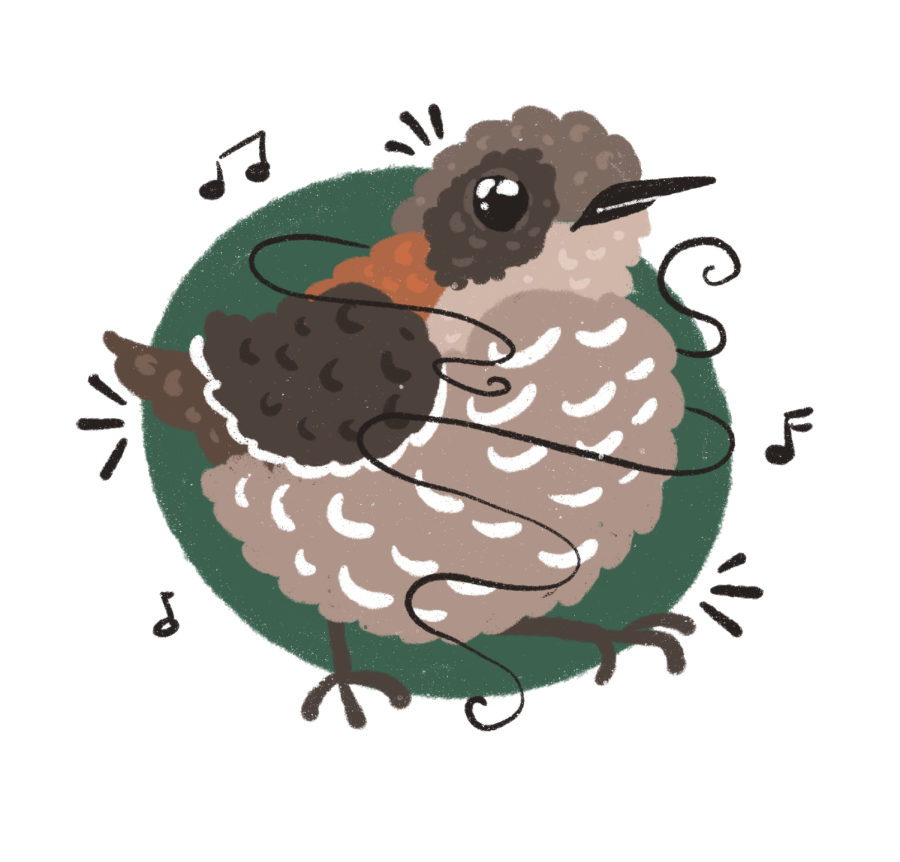What do songbirds and professional musicians have in common? Precise timekeeping
August 7, 2022
A perfect tempo is not something a skilled musician is born with. It’s achieved through years of exposure to music, timing ingrained in memory and lots of repetition. But for a scaly-breasted wren, a natural vocalization technique allows them to achieve the perfect spacing between notes in every single song.
During his postdoctoral research at UT, lead author Carlos Antonio Rodriguez-Saltos thought back to his work in Ecuador, where he learned to identify the scaly-breasted wren. Unlike other birds, the wren was not identified by its melody, but by its unique intervals between notes. The bird pauses for a duration between each chirp and increases by half a second, starting with just one second and ending at 10.
In his research, which could have implications in the fields of neuroscience, animal behavior and behavioral evolution, Rodriguez-Saltos sought to answer the question: does the songbird ever lose precision?
“The bird is highly precise in timing the notes in the song,” Rodriguez-Saltos said. “The precision is very close to that of a professional musician with 10 years of experience.”
The study was conducted in part thanks to Citizen Science, Rodriguez-Saltos said, as researchers used recordings of the wren uploaded to an international database. Timestamps were created from songbird recordings, which were applied to a mathematical model used to find patterns in the duration between notes.
The precision of timekeeping in animals, including humans, has only been tested in short intervals, study co-author Julia Clarke said. While humans may be able to estimate how long a second or two is, they tend to fall short during longer times.
“This is a natural behavior — it occurs in the wild — and it’s extremely precise, more precise than humans,” said Clarke, a UT geosciences professor who studies fossilized vocal organs in birds. “This cute little wren … is able to produce these notes at very precise intervals.”
Clarke said understanding structures in living songbirds, such as their ability to maintain tempo, can give insight into the sounds extinct birds produced.
The wren exhibits vocal production learning, a process that humans use to acquire speech. The process, Clarke said, could be key to the superior timekeeping accuracy of the songbird.
“What would we find if we look at the precision of other birds that don’t show vocal production learning for these longer interval durations?” Clarke said. “Are they as inaccurate as a mouse? If we think across the tree of life, how (do) these traits evolve?”
Studying timekeeping in songbirds may also reveal mechanisms of timing in the nervous system that are still unknown, Rodriguez-Saltos said. He said it’s something the researchers hope to explore later.
“Unfortunately, climate change and habitat destruction is threatening the habitats where these animals live,” Rodriguez-Saltos said. “It’s important to note that there are so many things that we can still learn from animals that live in these environments. … They can give fundamental knowledge to fields such as neuroscience, animal behavior or the evolution of behavior.”















